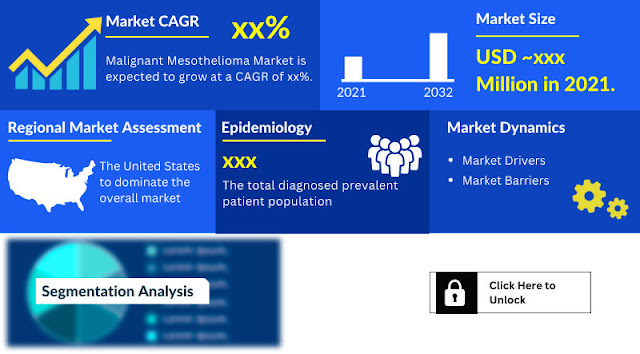What is Low-grade glioma Market?
What is the Low-grade
glioma?
Low-grade glioma (LGG’s) are a diverse group of primary
brain tumors that often arise in young, otherwise healthy patients and
generally have an indolent course with longer-term survival in comparison with
high-grade glioma. Moreover, in this type of brain tumor with a relatively good
prognosis and prolonged survival, the potential benefits of treatment must be
carefully weighed against potential treatment-related risks. Low-grade
astrocytic tumors include diffuse astrocytoma, pilomyxoid astrocytoma, and
pleomorphic xanthoastrocytoma (WHO grade II), as well as subependymal giant
cell astrocytoma (SEGA) and pilocytic astrocytoma (WHO grade I tumors). IDH1
and IDH2 are the most commonly mutated genes in low grade glioma, with
mutations estimated to occur in > 70% of cases. BRAF V600E point mutations
are occasionally observed in pilocytic astrocytoma; the mutations are also
observed in nonpilocytic pediatric low-grade glioma, including ganglioglioma,
desmoplastic infantile ganglioglioma, and approximately two-thirds of
pleomorphic xanthoastrocytomas.
What is the Low-grade Glioma Market?
DelveInsight's "Low-grade Glioma Market Insights,
Epidemiology and Market Forecast– 2032" report delivers an in-depth
understanding of the Low-grade glioma, historical and forecasted epidemiology
as well as the Low-grade glioma market trends in the United States, EU-5
(Germany, Spain, Italy, France, and the United Kingdom) and Japan.
What is the Low-grade glioma Market Size in 7MM?
The total Low-grade glioma market size was accounted for USD
969 Million in the year 2021 and is estimated to grow during the study period
(2019-2032).
Who are the leading Low-grade glioma Market Companies?
The key players in the Low-grade glioma market who are in
different phases of developing Low-grade glioma Therapies are - Day One
Biopharmaceuticals, AnHeart Therapeutics, Beigene, SpringWorks Therapeutics,
Servier, Helsinn, Forma Therapeutics, Hoffmann-La Roche, Incyte, Eli Lilly, and
others.
What is the Low-grade
Glioma Market Report?
Low-grade glioma market report provides current treatment
practices, emerging drugs, and market share of the individual therapies,
current and forecasted 7MM Low-grade glioma market size from 2019 to 2032. The
report also covers current Low-grade glioma treatment practice/algorithm, and
unmet medical needs to curate the best of the opportunities and assesses the
underlying potential of the market.
Explore more about the market share of the report- Low-Grade Glioma Market Share
What is the Low-grade
glioma Marketed Drug?
·
Trametinib
+ Dabrafenib: Novartis Pharmaceuticals
Novartis Pharmaceuticals is developing trametinib +
dabrafenib which is an oral small-molecule inhibitor Inhibits MAPK pathway and
inhibits cell growth of various BRAFV600E positive tumors. Currently, the
company is conducting Phase II trials on children and adolescent patients with
BRAF V600 mutation-positive relapsed or refractory HGG or BRAFV600
mutation-positive Low-grade glioma. Recently in June 2022, Novartis announced
that the US FDA has granted accelerated approval to Tafinlar (dabrafenib) +
Mekinist (trametinib) for the treatment of adult and pediatric patients 6 years
of age and older with unresectable or metastatic solid tumors with BRAF V600E
mutation who have progressed following prior treatment and have no satisfactory
alternative treatment options.
What are the Low-grade glioma Emerging Drugs?
·
DAY101: Day One Biopharmaceuticals
·
Vorasidenib: Servier
·
AB-218: AnHeart Therapeutics
·
Mirdametinib: SpringWorks Therapeutics
What is the Low-grade glioma Market Outlook?
At present, the therapeutic landscape of Low-grade glioma is
devoid of approved treatment, and there is a substantial unmet need for a
therapy to slow its worsening. The pathophysiology of Low-grade glioma is
poorly understood. The low-grade glioma segment is anticipated to be a highly
lucrative segment in the near future due to more treatment options available
and early detection of tumor of this grade. Low-grade gliomas progress into
HGGs over a period, so there is an urgent need for upcoming therapies to stop
the progression of Low-grade glioma into HGG, especially in the Grade 2 stage.
There is more focus on high-grade glioma than low-grade
glioma as patients with low-grade glioma typically lives longer than those with
high-grade glioma. Traditional outcome measures in clinical cancer research
have been confined to overall survival, progression-free survival, and
radiological response to treatment. Palliation and the maintenance or
improvement of quality of life are also important, and this recognition has
resulted in that health-related quality of life.
Many pharmaceutical companies are working to develop a novel
approach to treat this condition. Key players like Day One Biopharmaceuticals
(DAY101), AnHeart Therapeutic (AB-218), SpringWorks Therapeutics
(mirdametinib), Servier (vorasidenib [AG- 881]), and others are focusing on
indications like Low-grade glioma to fulfill the gap of this high unmet need.
Latest Market Research Reports 2022 by DelveInsight
- Pigment Epithelial Detachment Market
- Soft Tissue Defect Market
- Kawasaki Disease Market
- Erosive Hand Osteoarthritis Market
- Stem Cell Market
- Primary Mediastinal Large B-Cell Lymphoma Market
- Anastomotic Leak Devices Market
- Anti-Neutrophil Cytoplasmic Antibody-Associated Vasculitis Market
- Oncolytic Virus Cancer Therapy Pipeline
- Surgical Sealant Market
- Upper Tract Urothelial Cancer Market
- Opioid-related Disorders Market
DelveInsight is a Business Consulting and Market research company, providing expert business solutions for the healthcare domain and offering quintessential advisory services in the areas of R&D, Strategy Formulation, Operations, Competitive Intelligence, Competitive Landscaping, and Mergers & Acquisitions.




Comments
Post a Comment